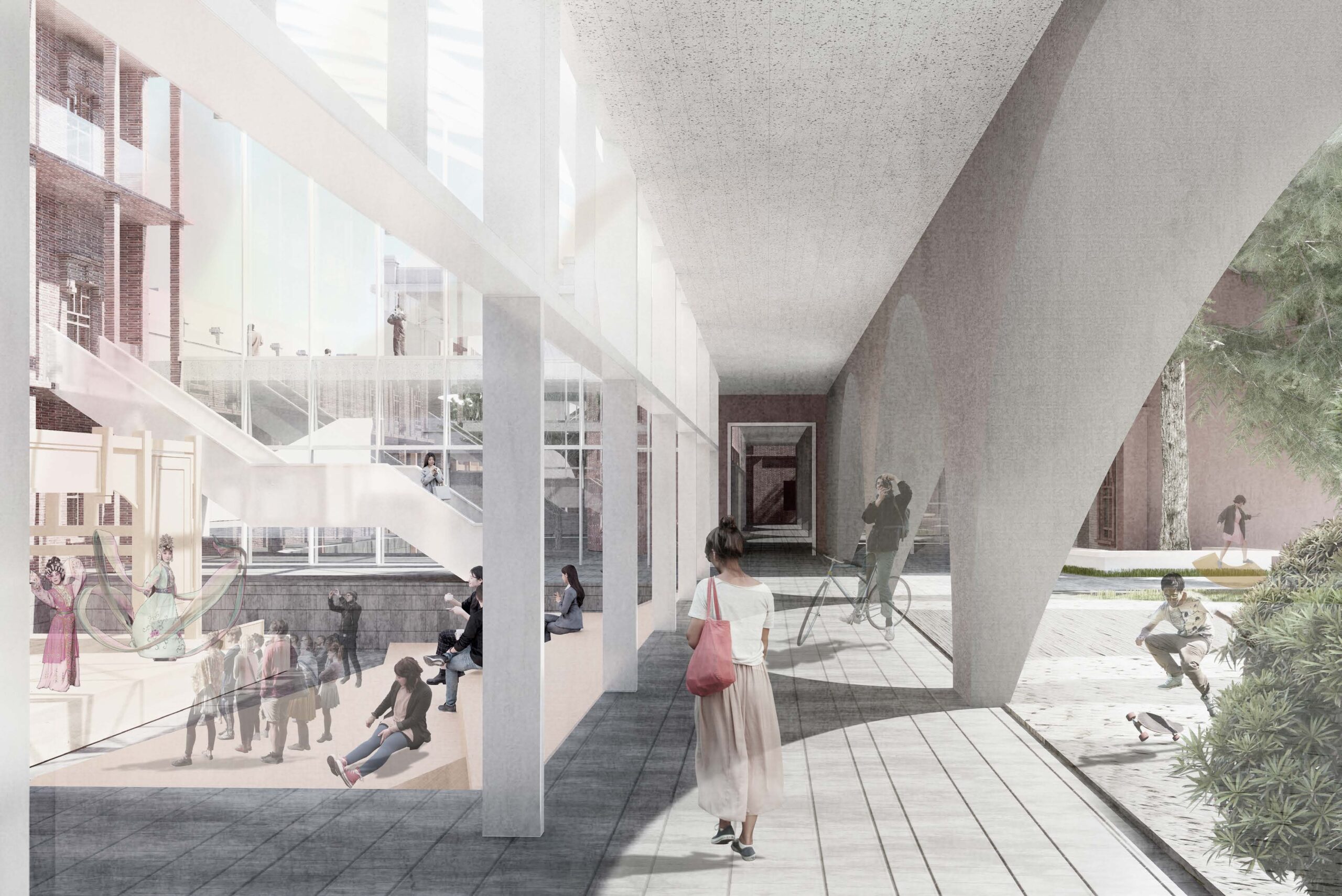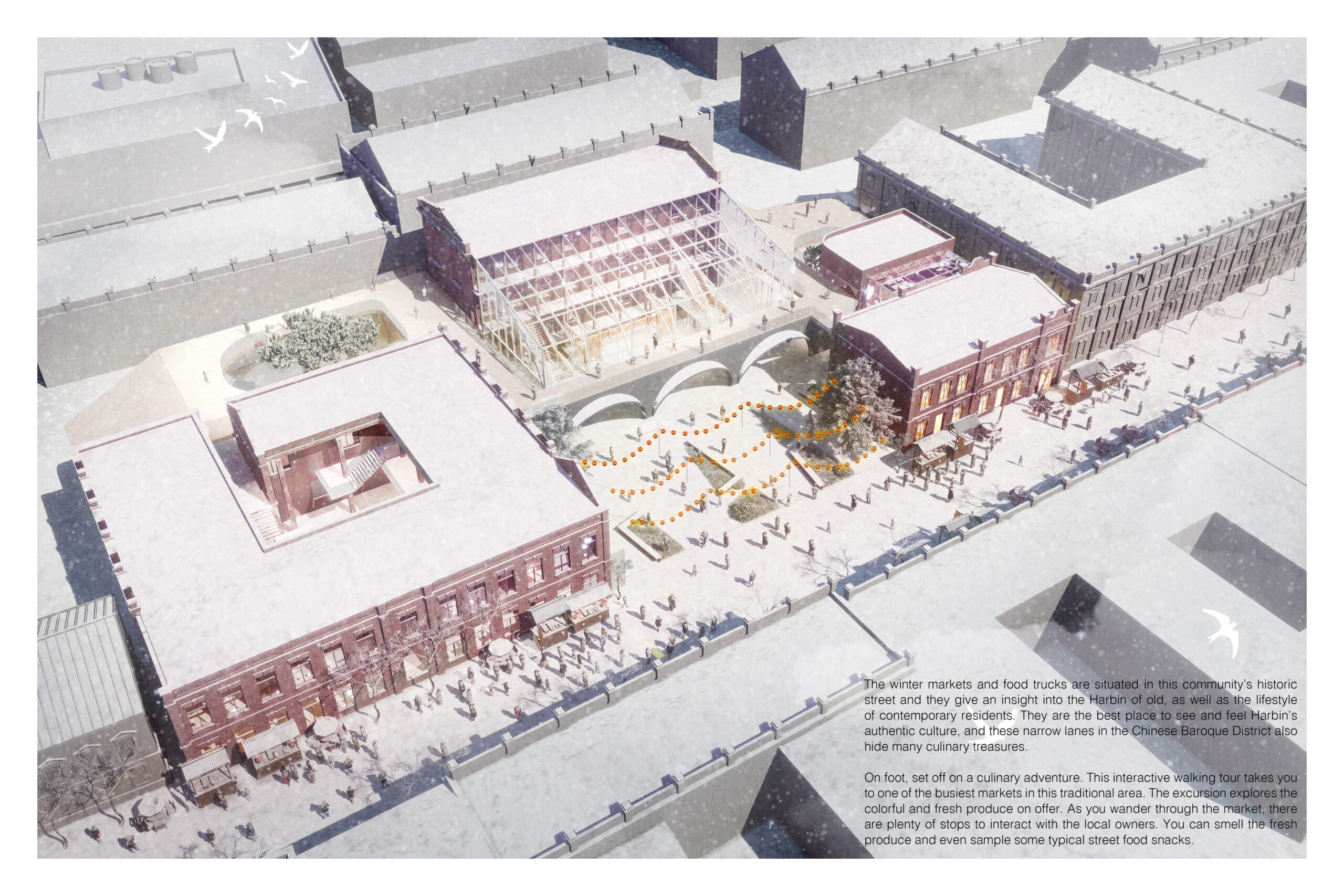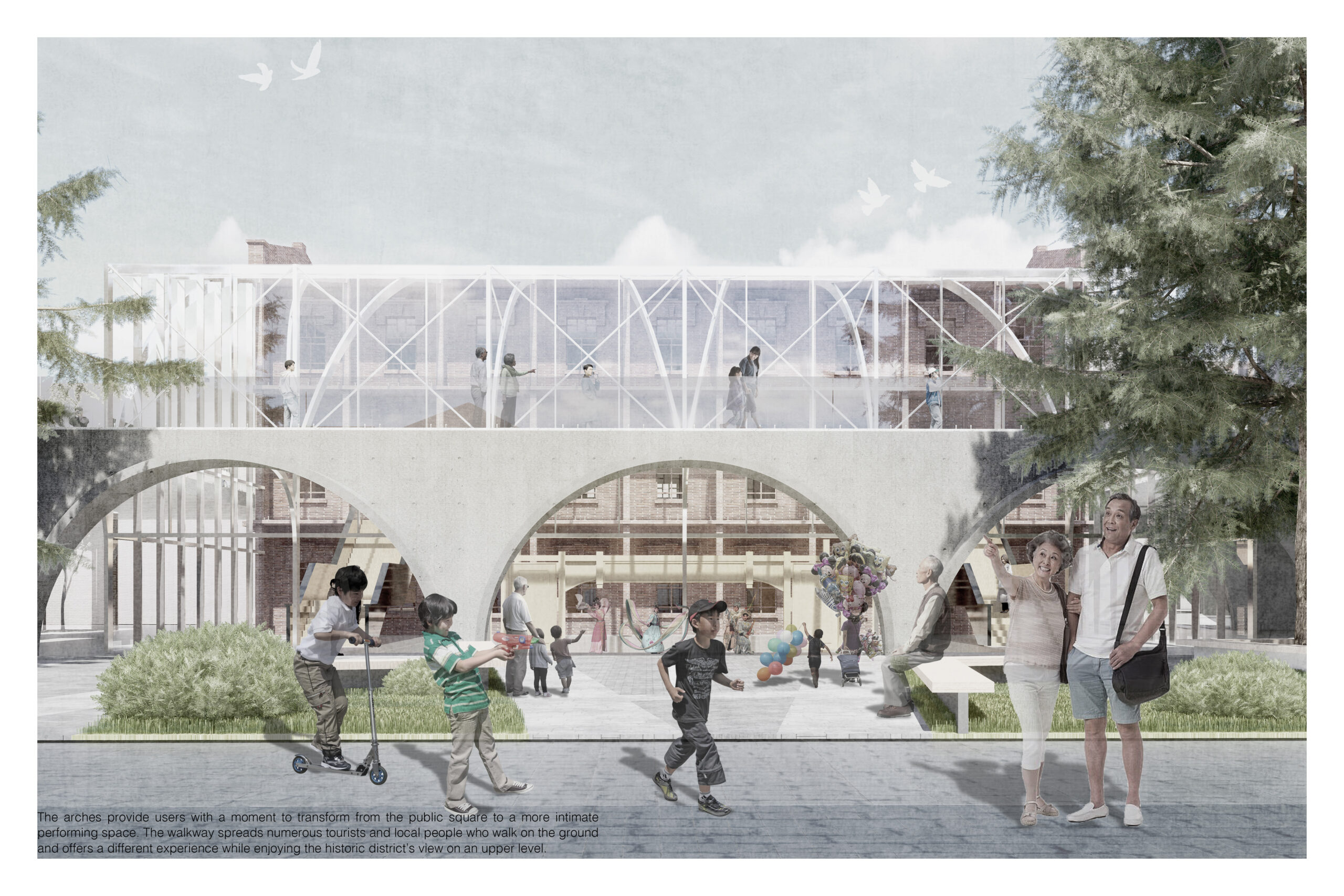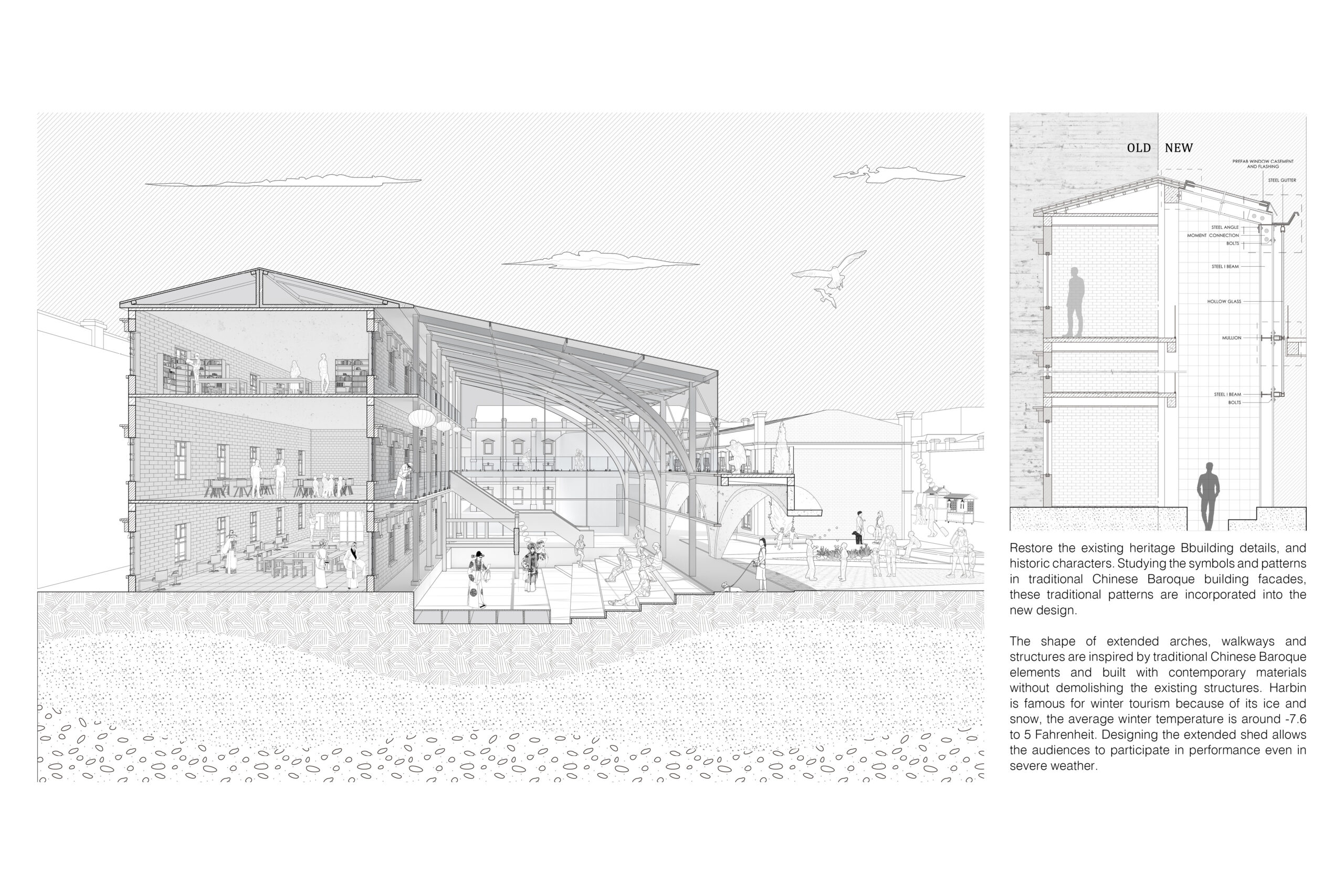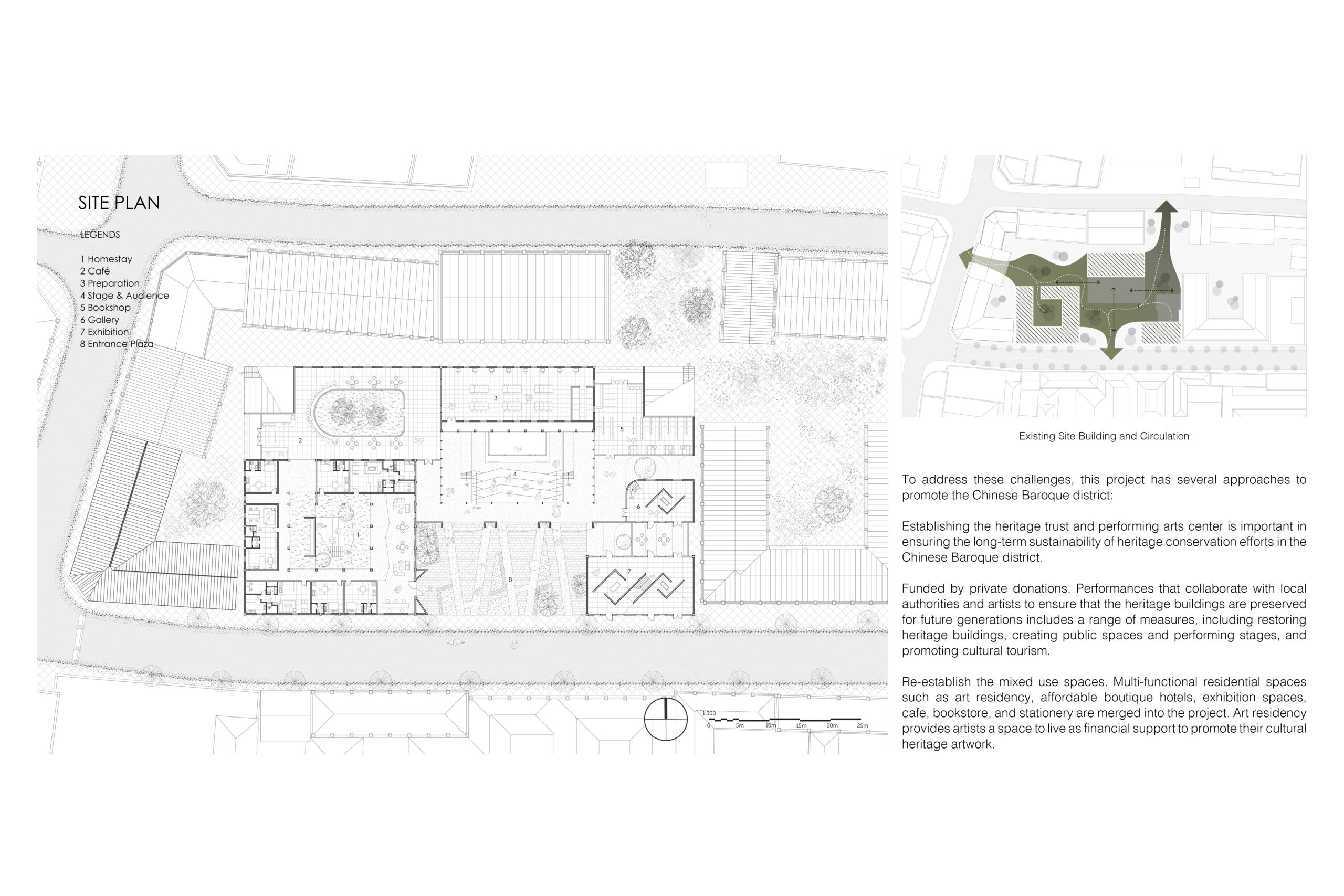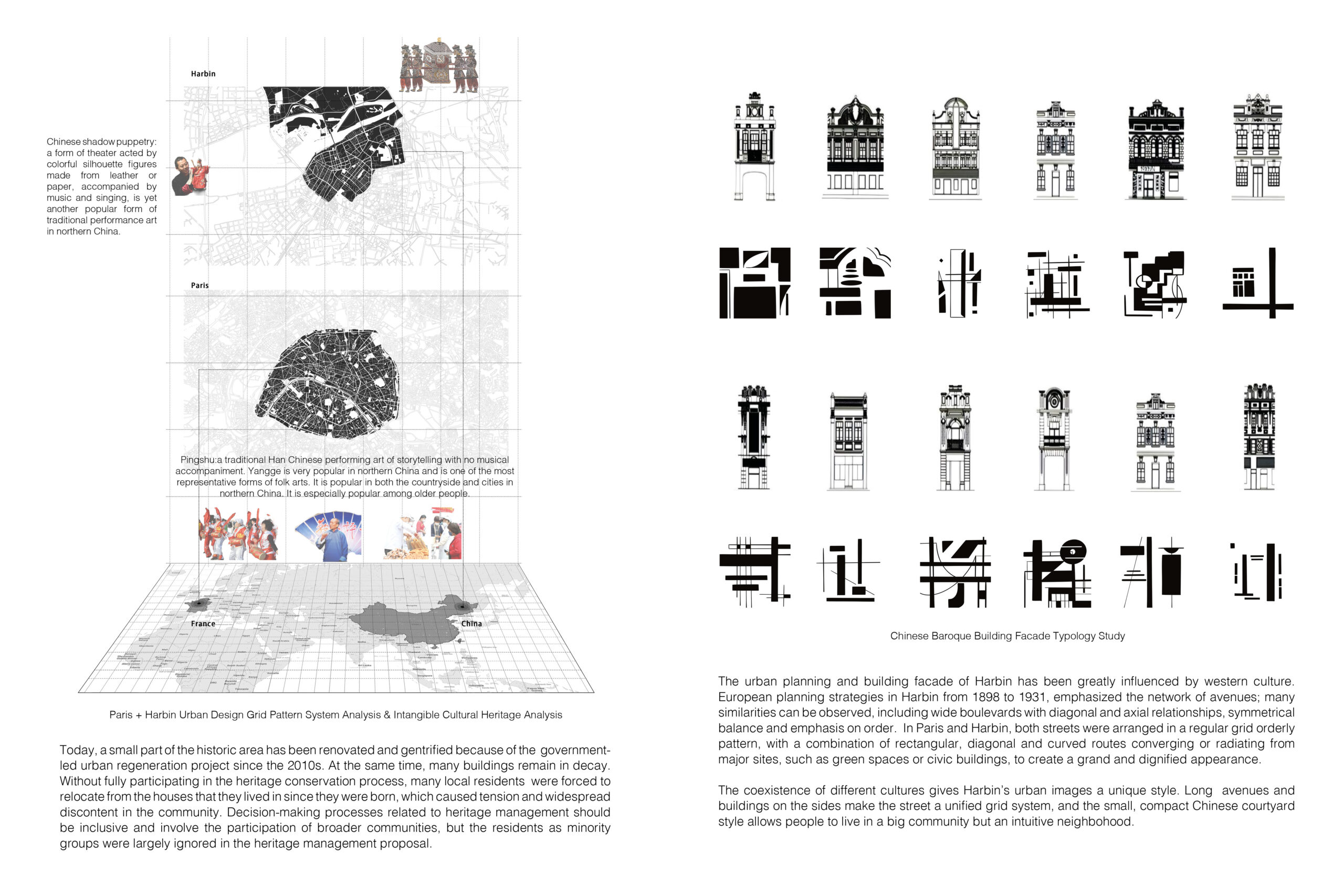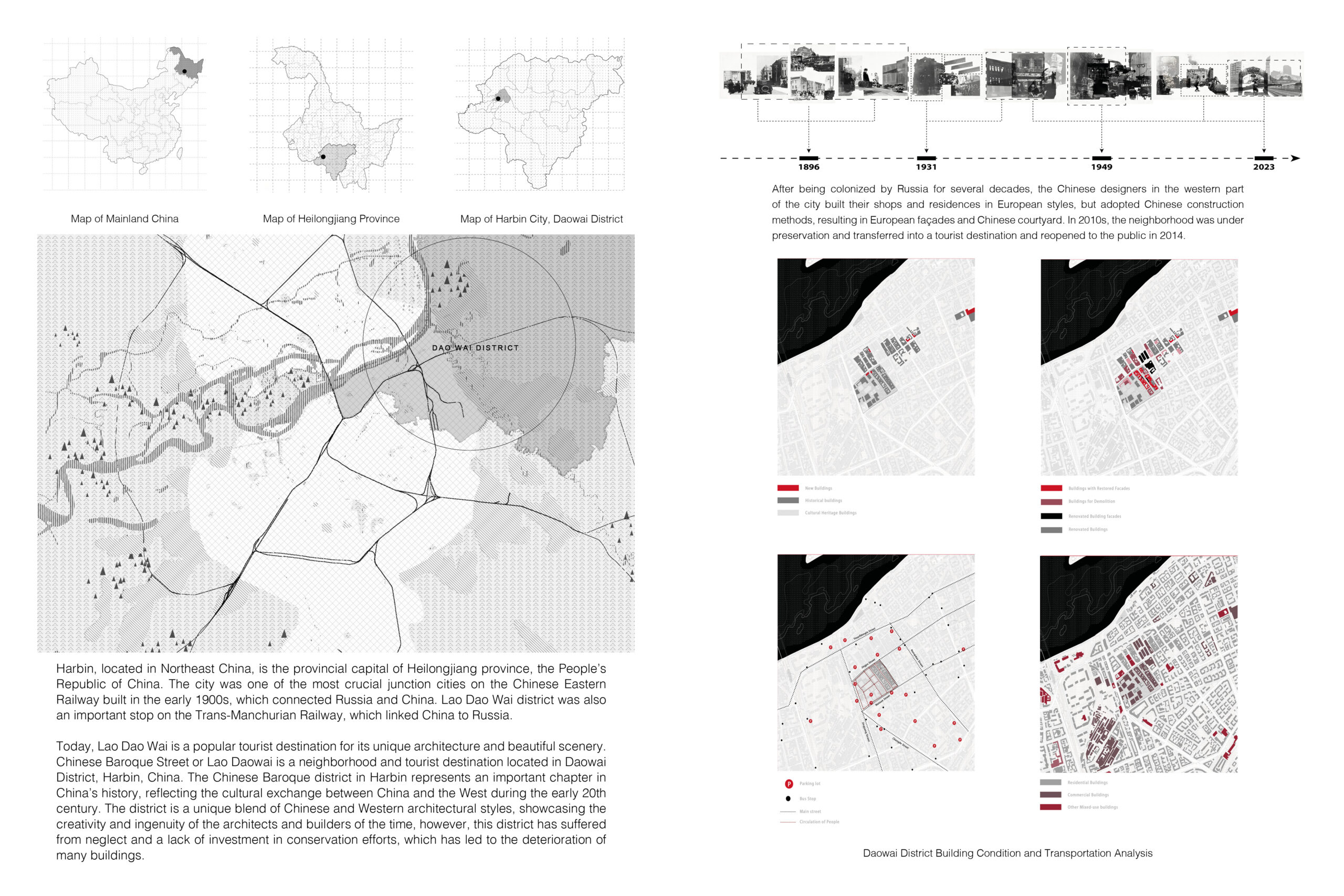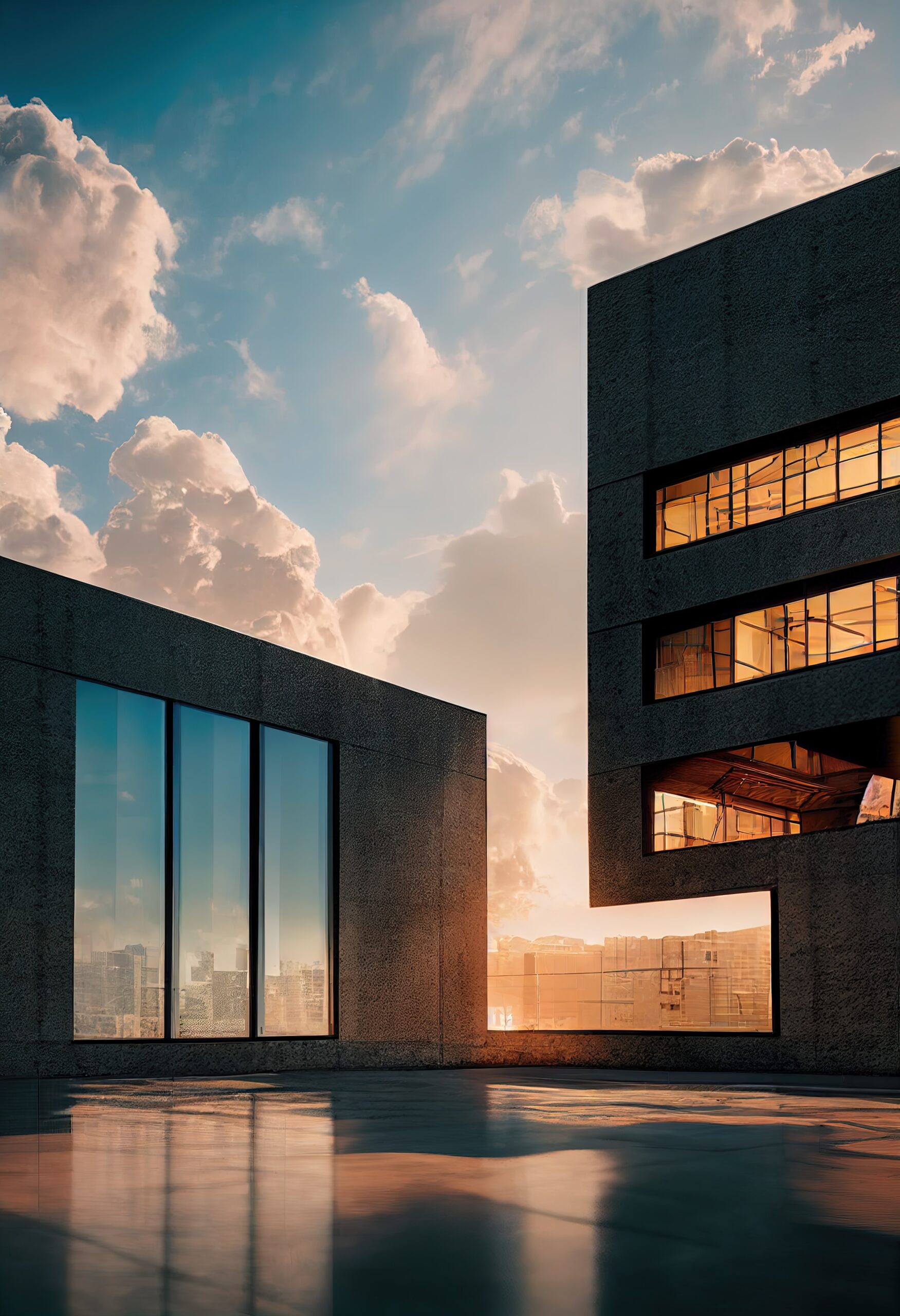Total Community

Best Adaptive Reuse & Restoration
Concept / Student
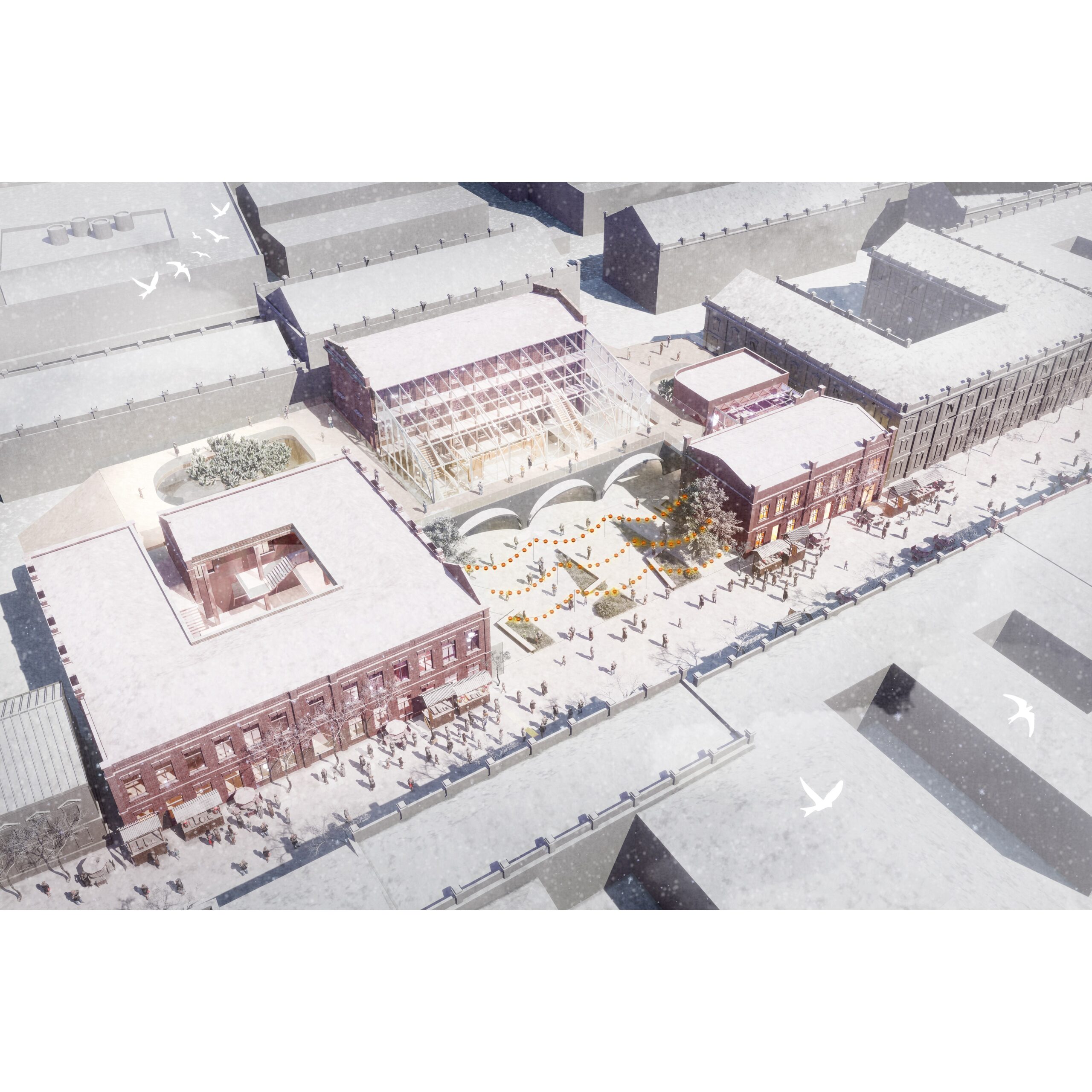
Architect / Designer:
Studio:
Design Team:
Copyright:
Country:
Harbin’s Chinese Baroque Street is known for its high historic value and integrated architectural style of Baroque façades and Chinese courtyard (Siheyuan). It is the largest existing area of Baroque buildings in China.
The district is not only a testament to the rich cultural heritage of Harbin but also a symbol of China’s progress and development over the past century. However, despite its significance, the Chinese Baroque district in Harbin is facing numerous challenges in terms of heritage conservation. One of the major challenges is the rapid pace of urban development, which has resulted in the destruction of many heritage buildings. Local authorities have taken steps to promote cultural tourism in the district by developing a range of tourism-related activities and programs. However, due to the demolition, residents were forced to move which caused the loss of authentic intangible cultural heritage.
Involving local communities in Harbin’s urban cultural heritage conservation projects is seen as a critical component of successful historic preservation efforts.My design proposal not only preserves the historical and cultural heritage of the area, promoting the city’s unique identity but also ushers in a modern lifestyle and facilities to the community and neighborhood. The design strives to manifest the Total Community concept, where the cultural heritage is protected, preserved and revitalized in an intuitive and bonding environment.
To address the economy recession, local population decline, and the cultural heritage loss of Chinese Baroque District, this project has several approaches to promote this district:
– Establishing the heritage trust and performing arts center is important in ensuring the long-term sustainability of heritage conservation efforts in the Chinese Baroque district.
– Funded by private donations. Performances that collaborate with local authorities and artists to ensure that the heritage buildings are preserved for future generations includes a range of measures, including restoring heritage buildings, creating public spaces and performing stages, and promoting cultural tourism.
– Re-establish the mixed use spaces. Multi-functional residential spaces such as art residency, affordable boutique hotels, exhibition spaces, cafe, bookstore, and stationery are merged into the project. Art residency provides artists a space to live as financial support to promote their cultural heritage artwork.

